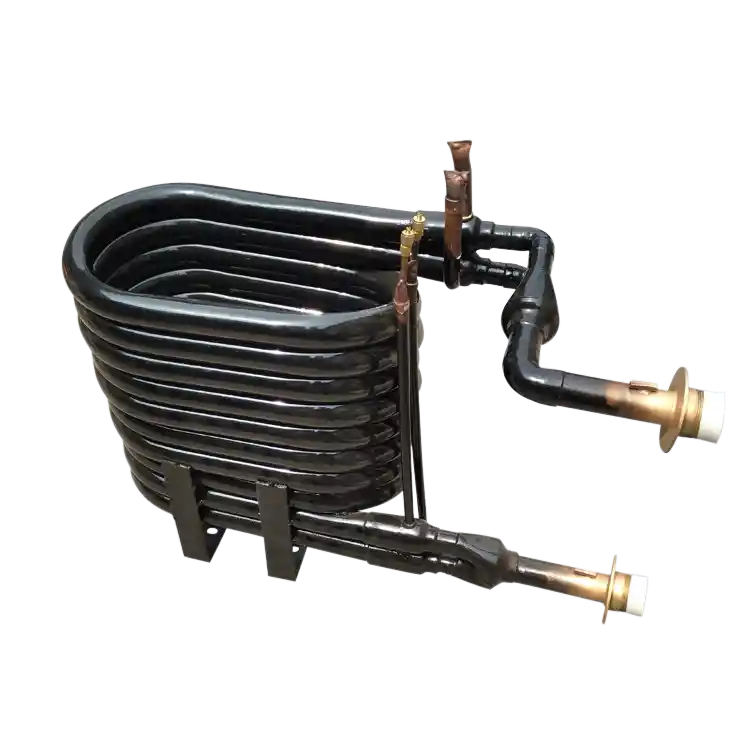Introduction
Flared fittings play a crucial role in the assembly and connection of tubes in coaxial heat exchangers. This article focuses on the use of flared fittings and their significance in ensuring secure and reliable connections. By understanding the principles, advantages, and considerations associated with flared fittings, manufacturers can optimize the performance and efficiency of coaxial heat exchangers.
1. Understanding Flared Fittings
Flared fittings are mechanical connectors designed to join tubes together in a coaxial heat exchanger. They rely on a flaring process to create a mating surface that ensures a secure and leak-proof connection. This section provides an overview of flared fittings and their key components.
1.1 Components of Flared Fittings
A flared fitting typically consists of the following components:
-
Flare Nut: The flare nut is a threaded component that holds the tubes together and provides the necessary compression force. It is usually made of a durable and corrosion-resistant material such as brass or stainless steel.
-
Flare Sleeve: Also known as the flare ferrule or flare ring, the flare sleeve is a cone-shaped component that forms the flared end of the tube. It serves as the sealing surface and ensures a tight connection between the fitting and the tube.
-
Tube: The tube is the main conduit through which the fluid flows in a coaxial heat exchanger. It is typically made of materials such as copper or stainless steel and is flared at the end to accommodate the flare sleeve.
1.2 Flaring Process
The flaring process involves the following steps:
-
The end of the tube is cut cleanly and squared off to ensure a proper seal.
-
A flaring tool is used to shape the end of the tube into a cone shape. The tool compresses the tube against the flaring cone, creating the desired flare angle.
-
The flare sleeve is then inserted onto the flared end of the tube.
-
The tube with the flare sleeve is inserted into the flare nut.
-
The flare nut is tightened onto the fitting body, compressing the flare sleeve against the fitting and creating a tight seal.
2. Advantages of Flared Fittings
Flared fittings offer several advantages that make them a preferred choice for tube connections in coaxial heat exchangers. This section highlights the key benefits associated with flared fittings.
2.1 Excellent Sealing Capability
Flared fittings provide an excellent sealing capability due to the mating surfaces between the flare sleeve and the fitting body. The flared end of the tube creates a reliable and leak-proof connection, ensuring the integrity of the fluid flow within the heat exchanger.
2.2 Enhanced Strength and Durability
The flaring process strengthens the end of the tube, providing enhanced strength and durability to the connection. The flared end of the tube distributes the stress over a larger surface area, reducing the likelihood of leaks or failures even under high pressure or temperature conditions.
2.3 Easy Assembly and Disassembly
Flared fittings are relatively easy to assemble and disassemble compared to other connection methods. The threaded design of the flare nut allows for convenient installation using basic hand tools. This ease of assembly and disassembly simplifies maintenance, repairs, and system modifications.
2.4 Compatibility with Various Tube Materials
Flared fittings are compatible with a wide range of tube materials, including copper, stainless steel, and aluminum. This versatility enables manufacturers to select the most suitable material for their specific application requirements, without compromising the quality of the connection.
3. Considerations for Using Flared Fittings
While flared fittings offer numerous advantages, certain considerations should be taken into account during their implementation. This section highlights key factors to consider when using flared fittings in coaxial heat exchangers.
3.1 Flare Angle and Dimensions
The flare angle and dimensions of the flared end should be carefully selected to ensure a proper fit and seal. Incorrect flare dimensions can lead to leaks, reduced strength, and compromised performance. Manufacturers should follow industry standards and guidelines when determining the appropriate flare angle and dimensions for their specific application.
3.2 Tube Preparation
Proper tube preparation is essential for achieving a reliable connection with flared fittings. The tube end should be cut cleanly and squared off to ensure a flat and smooth surface. Any burrs or imperfections on the tube end can hinder the effectiveness of the flare and result in leaks or weak connections.
3.3 Proper Torque Application
Achieving the correct torque during assembly is crucial for the integrity of the flared connection. Under-tightening can result in leaks, while over-tightening can damage the fitting components and compromise the seal. Manufacturers should follow the recommended torque specifications provided by the fitting manufacturer to ensure proper assembly.
4. Comparison of Flared Fittings with Other Connection Methods
In this section, we compare flared fittings with alternative methods commonly used for tube connections in coaxial heat exchangers. A comparison table is provided to highlight the differences and benefits of flared fittings.
| Connection Method | Advantages | Disadvantages |
|---|---|---|
| Flared Fittings | Excellent sealing capability, ease of assembly | Requires tube flaring, limited to specific angles |
| Compression Fittings | Easy installation, reusability, leak resistance | Potential for assembly errors, limited high-temperature capability |
| Welding | Strong and permanent connection, high-temperature capability | Requires specialized equipment and skilled labor, limited flexibility and reusability |
| Soldering | Good seal, moderate temperature capability | Requires flux and heat, limited strength |
| Threaded Connections | Easy disassembly and reassembly, flexibility | Potential for leaks, requires additional sealing measures |
Conclusion
Flared fittings offer a reliable and efficient method for connecting tubes in coaxial heat exchangers. With their excellent sealing capability, strength, and ease of assembly, flared fittings provide numerous advantages over alternative connection methods. By considering factors such as flare angle, tube preparation, and torque application, manufacturers can ensure secure and leak-proof connections in their heat exchanger assemblies. Flared fittings play a vital role in achieving optimal performance, reliability, and efficiency in coaxial heat exchangers, making them a preferred choice in various industrial applications.


